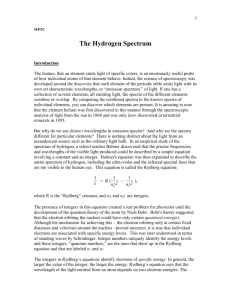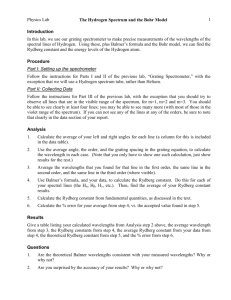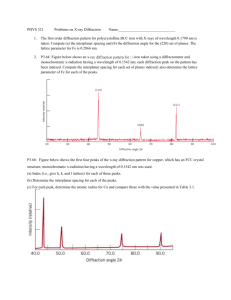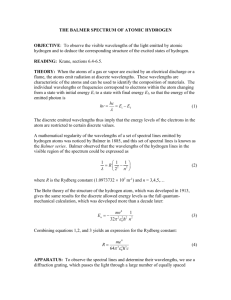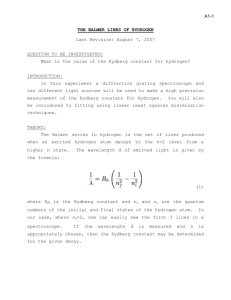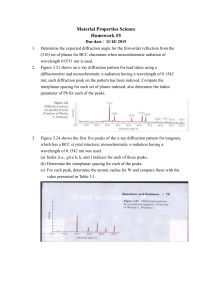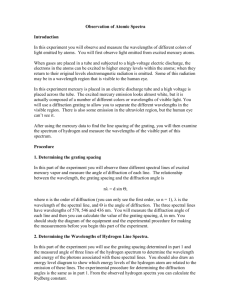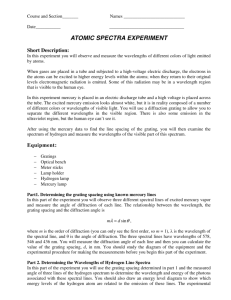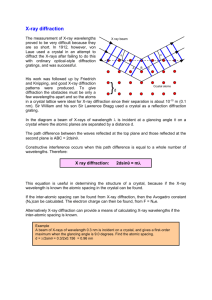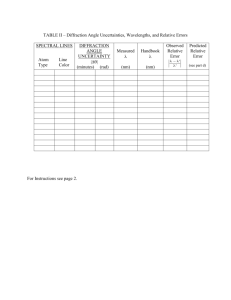lab4
advertisement
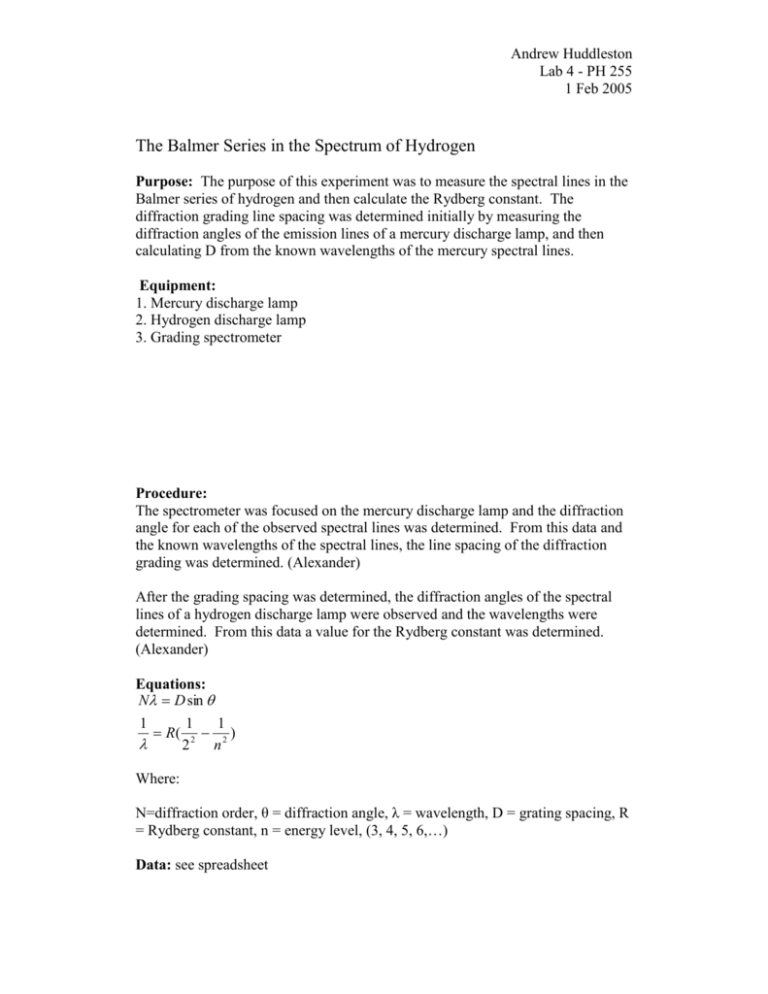
Andrew Huddleston Lab 4 - PH 255 1 Feb 2005 The Balmer Series in the Spectrum of Hydrogen Purpose: The purpose of this experiment was to measure the spectral lines in the Balmer series of hydrogen and then calculate the Rydberg constant. The diffraction grading line spacing was determined initially by measuring the diffraction angles of the emission lines of a mercury discharge lamp, and then calculating D from the known wavelengths of the mercury spectral lines. Equipment: 1. Mercury discharge lamp 2. Hydrogen discharge lamp 3. Grading spectrometer Procedure: The spectrometer was focused on the mercury discharge lamp and the diffraction angle for each of the observed spectral lines was determined. From this data and the known wavelengths of the spectral lines, the line spacing of the diffraction grading was determined. (Alexander) After the grading spacing was determined, the diffraction angles of the spectral lines of a hydrogen discharge lamp were observed and the wavelengths were determined. From this data a value for the Rydberg constant was determined. (Alexander) Equations: N D sin 1 1 1 R( 2 2 ) 2 n Where: N=diffraction order, θ = diffraction angle, λ = wavelength, D = grating spacing, R = Rydberg constant, n = energy level, (3, 4, 5, 6,…) Data: see spreadsheet Andrew Huddleston Lab 4 - PH 255 1 Feb 2005 Sample Calculations: D = λ/sinθ = 579.0 * 10E-9 / sin (17.6 deg) = 1.915E-6 m λ = Dsinθ = 1.915E-7 * sin (23.5 deg) = 764 nm 1/764 nm = R(1/4 – 1/9), R = 1.097E-7 m -1 Results: Average value of D = 1.74E-6 Hydrogen λ error: Red: 692 nm, 5.5 % error Blue: 506 nm, 4.1 % error Violet: 448 nm, 9.3 % error Rydberg error: 5.9 % Error Analysis: ΔD = -λcosθΔθ/sin2θ = -(579nm)(cos 17.6)(.01)/(sin2(17.6) ΔD = 6.04E-8 m ΔD/D = 6.04E-8 / 1.67E-6 = .036 = 3.63 % Discussion: Our calculated hydrogen wavelengths differed from the accepted values only slightly, they were sufficient enough to render a Rydberg constant calculation of less than 6 percent error of the accepted value. The calculations could have been made more precise given the apparatus we were using could measure more accurate angles. Overall the values calculated were sufficiently close given the equipment we had and the amount of precision with which we measured our data.

